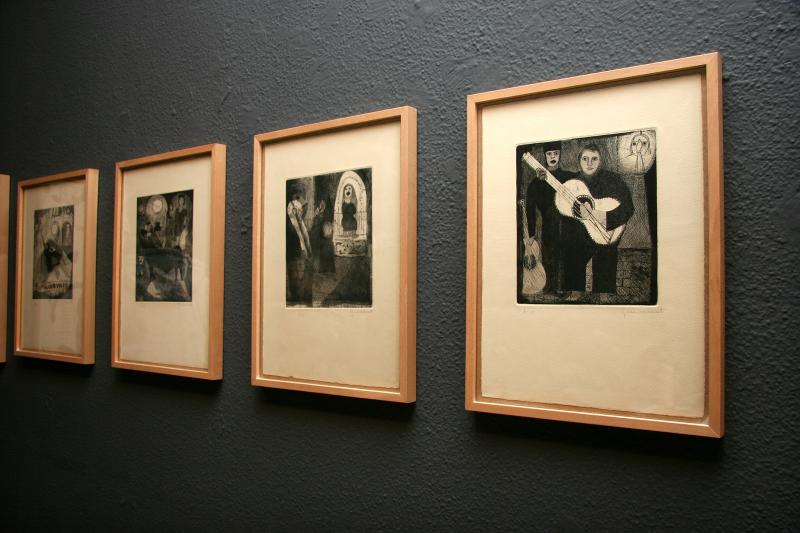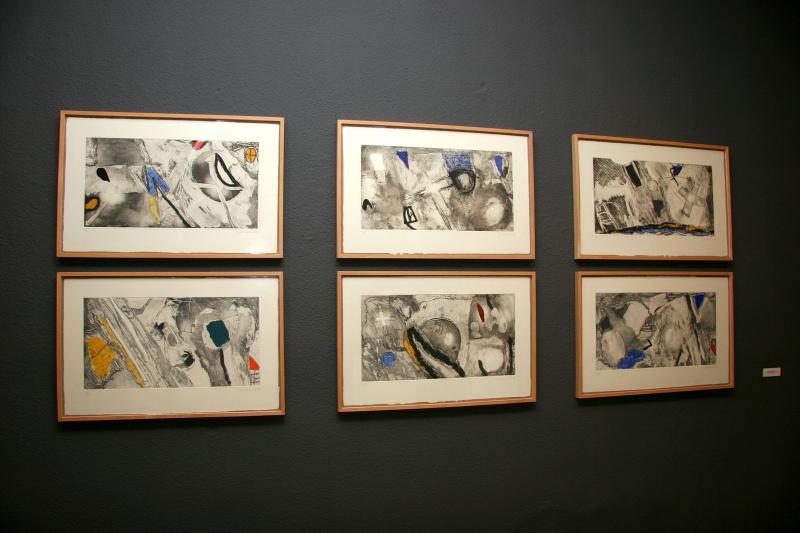Res no és mesquí, Guinovart i els poetes
Josep Guinovart
Josep Guinovart's interest in poetry is known. He always expressed his admiration for Lorca, who was the author who made him discover the strength of the image and poetic language. Although the discovery of poetry was relatively late, there is no doubt that he was acquiring a growing role in his plastic work. The first important manifestation of the explicit presence of poetry in his work was the Folder Homenaje a García Lorca, published in Cobalto, in 1951, by Rafael Santos Torroella, with seven etchings printed by René Métras.
Another decisive author in the work of Guinovart is Joan Salvat-Papasseit. The social commitment of the avant-garde poet and lyrical and at the same time popular in Salvat-Papasseit was linked completely to Guinovart's artistic, direct and overwhelming work. The illustrations for the edition of the poetic work of Salvat-Papasseit in 1962 were emblematic for the cultural resistance of the progressive Catalanism of the moment.
Since then, Guinovart has not stopped registering the verses of the poets in their works. The presence of the sign, the writing and the letter in his own pictorial work has become one of the most significant characteristics of his work. The extensive series of works from The Decapitations of Peter IV, 1969, or the Poetry in New York, of Lorca, in 1998, intensify in a clear way the identity between the poetic message and the language plastic looking for the artist.
On the other hand, editions such as Seis poemas galegos, by Lorca, from 1998; The four stations, by José Hierro, of 1992, or the ten lithographs dedicated to León Felipe, in 1991, are testimony to the quality and richness of the wide graphic work of Guinovart. Probably, the crisis of ideologies and the political discourses of the left led Guinovart to a greater identification with poetic language. The tribute to Màrius Torres, from 1998-2000, or Ítaca work, from 2001, dedicated to Kavafis, are magnificent examples of this poetic policy of Guinovart's latest work.
Manuel Guerrero




